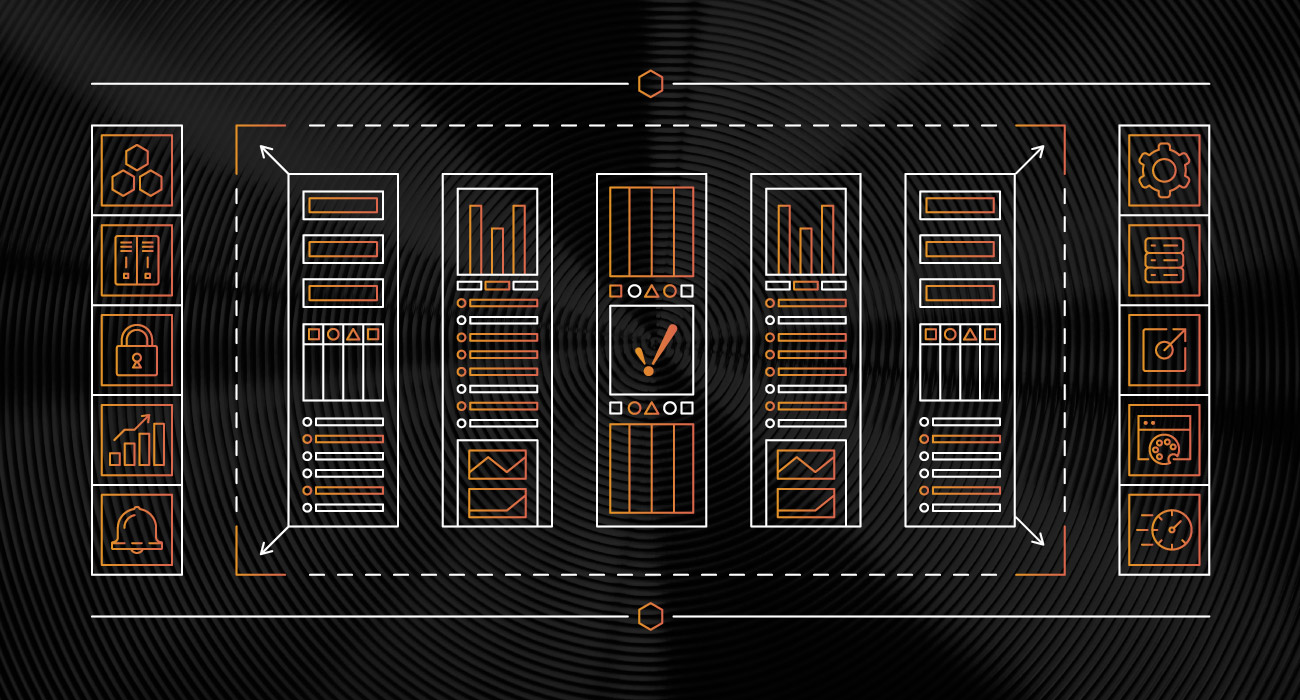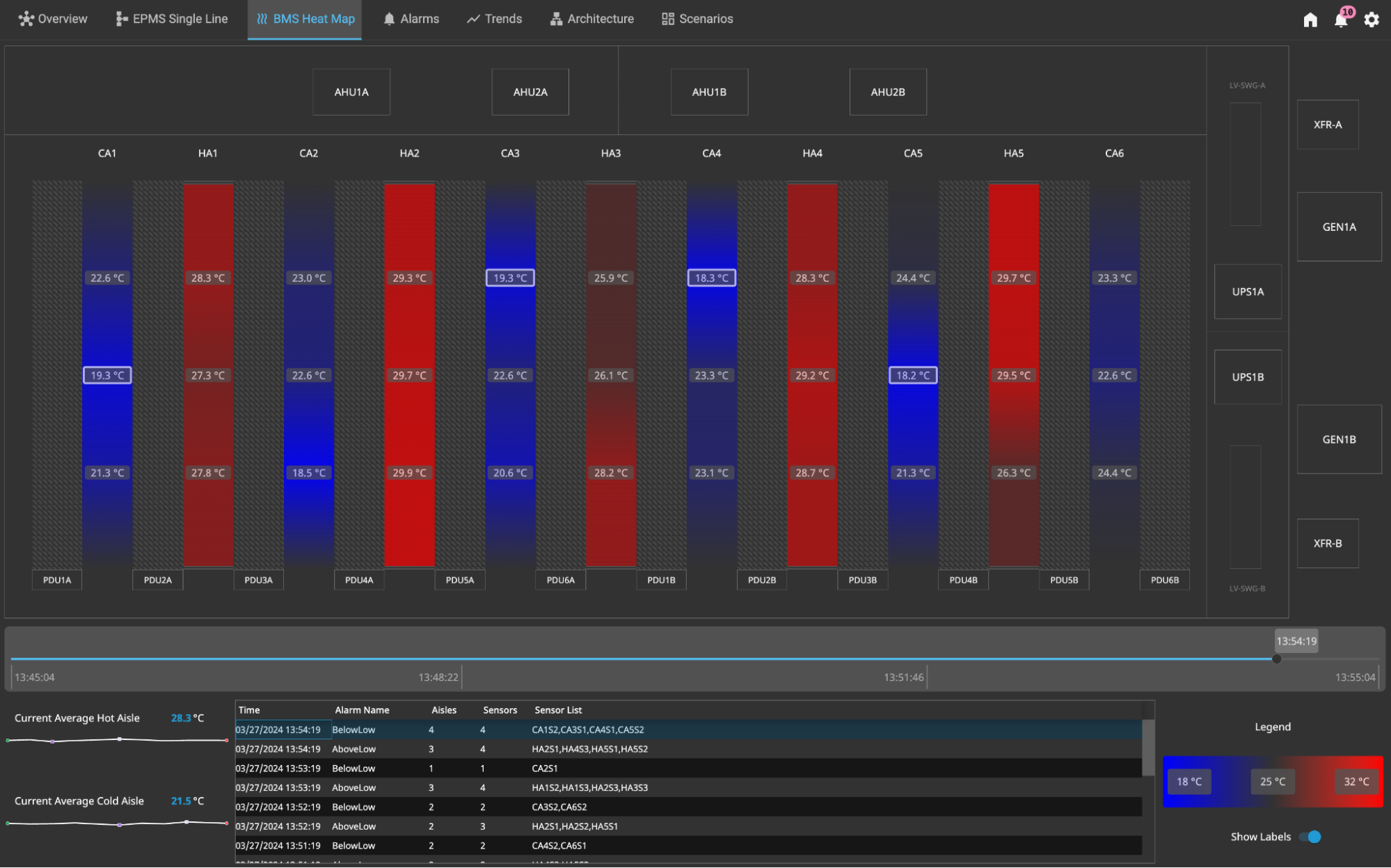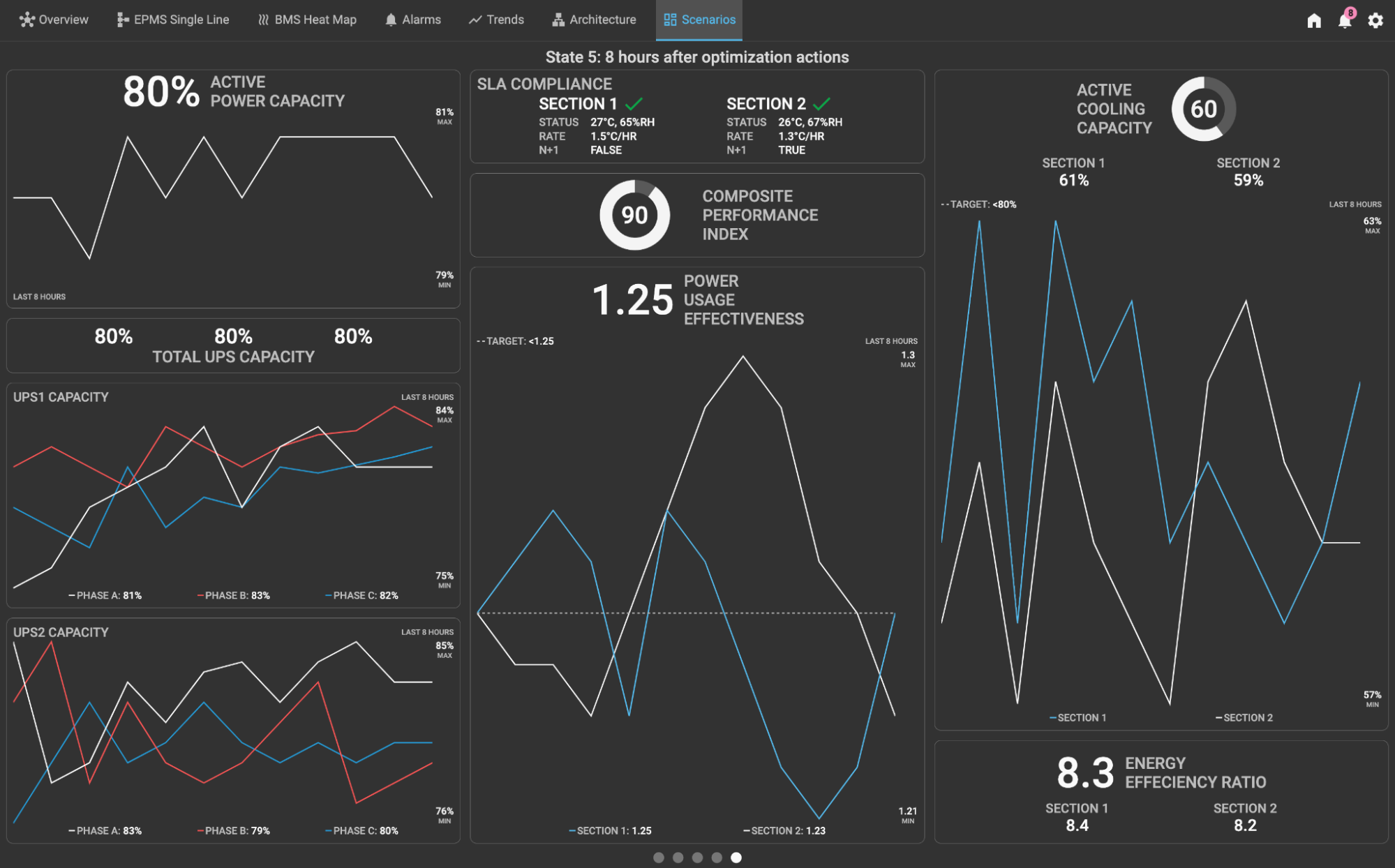Empowering Data Center Growth: Leveraging Ignition for Scalability and Efficiency

Data center growth has exploded over the past decade. Initially driven by organizations moving their computer assets to the cloud, this trend has only accelerated. With the rise of AI and its need for even more computing power, data center expansion remains a critical focus. Whether it's hyperscalers or colocation owners, the need for more data center capacity remains crystal clear.
Data centers require substantial power and cooling. As they expand, their power and cooling demands increase in step. In today’s fast-paced market, data center operators need an easily manageable system for building and power management that can swiftly scale up and deploy. BW Design Group, one of the largest System Integrators in the US, is experienced in designing and implementing systems that meet the unique needs of data centers. They deploy Ignition by Inductive Automation to clients in this sector because of its efficient system management and monitoring, scalability, and rapid deployment capabilities. In this post, BW Design Group will share their strategies, insights, and best practices for leveraging the power of Ignition in data centers.

Sample screen for viewing hot-aisle and cold-aisle conditions in real-time and with key event playback
Architecture & Design
To deploy a data center project at scale, it's important to have set standards and base projects to follow. It’s necessary for a system integrator to adhere to these established standards. If there are no standards in place, it's crucial to create them in a thoughtful way. These Ignition features can help.
Remote Tag Provider
The remote tag provider bridges the gap between different Ignition installations, allowing seamless sharing of tags across networked Gateways. This tool enhances visibility across a data center campus, spanning multiple distinct data halls and buildings. It can even extend its reach to encompass multiple campuses across a broader geographical area.
Ignition Redundancy
The platform’s native redundancy feature is one of the most important tools for any data center to leverage, as it is critical to maintaining seamless uptime in case of a system failure. Beyond basic redundancy, data center owners need to consider all potential failure scenarios and strategically deploy Ignition gateway pairs to support logical zones of the data center.
Flexible Deployment Options
Ignition is a powerful industrial communication platform capable of communicating directly with devices, bypassing the need for third-party OPC servers like Kepware. This cost-saving approach minimizes OPC licensing expenses. Additionally, Microsoft licensing can significantly impact finances due to operating-system and SQL costs. Depending on data center technicians’ skills and support systems, a fully Linux architecture with Postgres for the database might be advantageous. Ignition’s cross-platform compatibility makes this feasible, unlike many traditional industrial software packages.
Platform Security
Cybersecurity should be an important focus of any data center installation. Ignition offers several security features that can help improve a data center’s overall security posture, such as:
- SSL/TLS encrypted HTTPS
- Authentication options such as third-party IdP, internal or database authentication, and LDAP
- Well documented network protocol usage, allowing for strict firewall policies
- Flexible authorization options based on role, location, and/or zone
Inductive Automation diligently maintains additional information for enhancing security and stays current with communication related to security matters on the Ignition platform through their security portal. This proactive approach ensures that users have access to the latest security updates and relevant details.
Development & Version Control
Managing large-scale change and maintaining a consistent look and feel is critical, no matter the platform. While some organizations are more lenient in how system integrators apply their standards, others prefer to have tight, centralized control over their templates and objects. In cases where a core team has tight control over the application standards, it can be very beneficial — and often necessary — to leverage a version control system like Git to manage and control change at a large scale. Unlike other SCADA packages, Ignition supports Git integration. Git tracks changes to source code and other files, provides tools for managing different versions, and rolls back when necessary. Additionally, developers can add comments about changes for historical reference. As many development teams are often remote, users benefit from better quality and consistency of Git integration, resulting in more manageable change and bug fixing, especially for distributed teams working across time zones. Overall, this feature enables development teams to leverage workflow tasking, enhancing overall efficiency.
In addition to the benefits of version control, the use of the Ignition Enterprise Administration Module (EAM) provides a secure and intuitive way to manage multiple installations centrally. EAM provides status and management of all the gateways in an ecosystem in one central location.
Containerization can also be used to deploy Ignition with the Docker image. This allows for Continuous Integration/Continuous Delivery (CI/CD) deployment models which, in conjunction with orchestration platforms, such as Kubernetes and Docker Swarm, enable deployment automation and efficiencies. Using some or all of these IT management tools allows Ignition to be deployed and managed using ‘Infrastructure as Code’ methodologies, dramatically reducing the time to both stand-up distributed workloads and manage application testing and maintenance.
Key Performance Indicators (KPIs) & Historical Data Collection
Every data center needs instant access to data visualization, for both real-time and historical information. Ignition is an excellent tool to collate data, synthesize it into useful information, and effectively display it in a way that is meaningful to operators. In large campuses with diverse buildings and KPIs sourced from various data points, Ignition efficiently consolidates data and transforms it into meaningful insights for operators. Whether through a steady-state, continuously visible dashboard, or critical alarms triggering email notifications to management, Ignition streamlines information flow.

Power, cooling, and compliance data consolidated into a single balance scorecard view
Historical data collection is a fundamental aspect of all data center installations. The ability to analyze past conditions is crucial for evaluating failures and ensuring optimal performance. While data center operators may have their unique strategies, several common scenarios are:
- Ignition functions as its own historical provider, with Ignition serving as the primary source of historical data
- Ignition forwards that information to another client-specific historical system
- Ignition is a direct interface for a client-specific historical system and can extract information live via the OPC UA server and/or the Ignition history system APIs
- The data center provider establishes a parallel historian path directly to the equipment, collecting data in tandem
In any of the above methods, or a combination of a few, Ignition is flexible to meet the operator’s needs.
Graphical Design & Templatization
One of Ignition’s greatest and most apparent assets is its templatization capabilities, both for tag structure and visual design. Providing consistency across the application not only greatly increases speed of deployment but also drives consistency in look and feel for operations. Training new operators on various systems/platforms for multiple data centers in the same campus is not only time-consuming but also an inefficient use of resources and time.
As discussed in the previous section, Ignition excels in collecting, synthesizing, and visualizing data that is meaningful to the end user, which is the operations team. Often, it can be difficult for operations teams to gain consensus on design during the early stages of a data center SCADA project. This pain point can be addressed with collaboration with modern design tools like Figma. Figma is a collaborative design tool where teams can draft mockups, share internally, collect feedback, revise, and approve the final product. Leveraging Figma with Ignition is advantageous because:
- Ignition is HTML5-based, meaning it can utilize CSS-based styling, resulting in a final product that closely aligns with the team’s vision via the mockups.
- It is much more efficient and cost-effective to use Figma’s streamlined revision capabilities during initial design, rather than making revisions on Ignition during actual platform development
Sharing Data
Closed-off, vertically integrated platforms are in the past. Today’s fast-paced market demands platforms that “share well” with other systems. Ignition’s Cirrus Link MQTT integration seamlessly shares data with other systems, both through MQTT and more specific cloud protocols. This capability allows data center owners to share data with their customers in a uniform, easily accessible, low bandwidth, and resilient fashion.
Alarm Notification Module
In modern data center design, the alarm strategy can often take precedence over the dashboard graphical representation and user experience in a SCADA platform. Data centers are meant to operate and be self-sustaining with several levels of redundancy. Ignition provides flexible prioritization options that align with actionable events from operations and maintenance staff. Prioritization of work is essential, regardless of platform.

In addition to real-time alarming & notification, alarm journals provide historized alarm summaries accessible via SQL
When an alarm is activated, it’s crucial to promptly notify individuals beyond the control-room operators. Ignition’s notification pipelines play a vital role in alarm communications. They can send emails, text messages, voice calls, and integrate with other notification or ticketing systems. The module’s flexibility allows for easy configuration for almost every imaginable notification criterion, ensuring alarms are addressed promptly and with the appropriate level of visibility.
Platform Versatility & Vibrancy of Community
As a fully integrated architecture, engineering, construction, system integration, and consulting firm partnering with clients in the food and beverage, life sciences, industrial, and advanced technology industries, BW Design Group has seen Ignition mature firsthand and witnessed its immense value for clients across various markets and sizes, including many Fortune 100 companies. Ignition stands out amongst competitors with its vibrant user community. It’s clear that Ignition has a solid reputation and strong support. Data center owners can confidently find an integration partner that suits their needs.
Commissioning
Regardless of platform, quick startup and commissioning processes are key. Ignition has several capabilities that streamline this process, ensuring efficiency and repeatability.
Ignition’s scripting capability decreases field time and increases speed of deployment by enabling deployment engineers to quickly instantiate or modify field devices, confirm field device connections, and/or quality check the application deployment status.
It’s a common practice to commission sections of a data center as soon as they are built. This way, companies leverage the capacity as soon as it’s ready, getting operations up and running even before the whole data center is fully constructed. Tag providers can be very useful for these cases, as they can help keep alarms and tags from the newly commissioned sections separate from those that aren’t yet operational. As sections are commissioned, they can be migrated to the main tag provider. This method removes the “noise” from the not-yet-commissioned sections, letting operators focus on the data they need.
Conclusion
Ignition is a dynamic and modern platform, packed with features that significantly benefit the data center industry. Considering the high conversion costs for SCADA, it’s crucial to opt for a flexible, future-ready platform that not only meets today’s needs but also anticipates tomorrow’s requirements. As an experienced system integrator, BW Design Group highly recommends Ignition for facility management as it is a scalable solution applicable to both small and large data centers.
